- Home›
- Healthy Living›
- International Yoga Day 2023: 6 Yoga Asanas To Reduce Belly Fat
International Yoga Day 2023: 6 Yoga Asanas To Reduce Belly Fat
By: Priyanka Maheshwari Mon, 19 June 2023 10:42:15
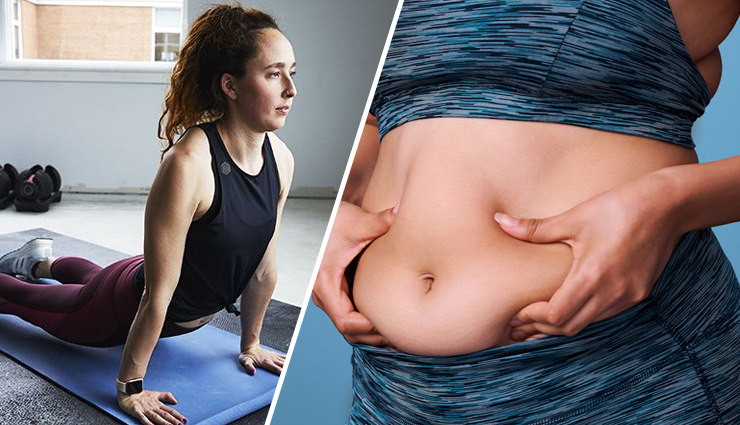
Yoga offers a holistic approach to reducing belly fat by combining physical movement, breath awareness, and mindfulness. One of the common concerns many people have is excess belly fat. Belly fat not only affects our appearance but also poses risks to our overall health. On this International Yoga Day 2023, let's explore 6 yoga asanas that can help in reducing belly fat and promoting a healthier body.
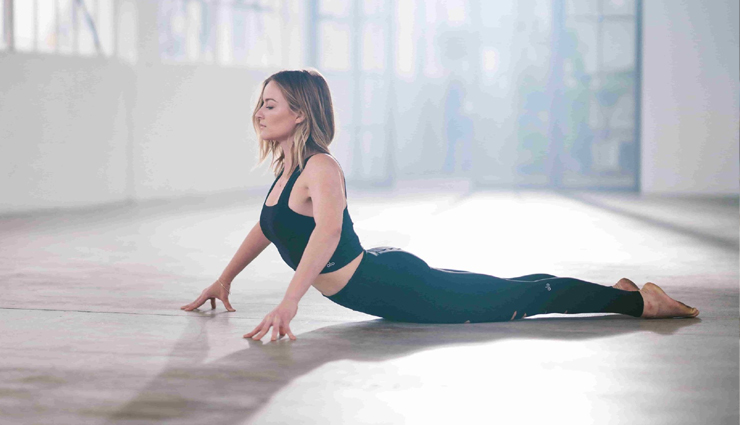
# Bhujangasana (Cobra Pose)
Bhujangasana is a gentle backbend that strengthens the abdominal muscles and improves digestion. It stretches the abdominal area, stimulates metabolism, and helps in burning belly fat. Regular practice of this pose can tone the belly and reduce excess fat.
Steps to Practice Bhujangasana (Cobra Pose):
- Start by lying flat on your stomach on a yoga mat, with your legs extended and the tops of your feet touching the ground.
- Place your hands on the mat beside your shoulders, palms facing downward, and elbows bent, tucked close to your sides.
- Inhale slowly and press your hands into the mat, lifting your upper body off the ground. Keep your pubic bone grounded and engage your core muscles.
- Straighten your arms while keeping a slight bend in your elbows, lifting your chest and upper back as high as comfortable.
- Gently tilt your head backward, lengthening the back of your neck, and direct your gaze upward or forward, without straining your neck.
- Maintain the pose for 15-30 seconds, breathing deeply and evenly.
- Exhale and slowly release the pose, lowering your chest and upper body back to the ground.
- Repeat the pose for 3-5 rounds, gradually increasing the duration as you become more comfortable.
Precautions:
- Avoid practicing Bhujangasana if you are pregnant or have recently undergone abdominal surgery.
- Individuals with herniated discs, back injuries, or carpal tunnel syndrome should approach this pose with caution or seek guidance from a qualified yoga instructor.
- If you experience any pain or discomfort during the pose, gently come out of it and consult a healthcare professional or yoga instructor.
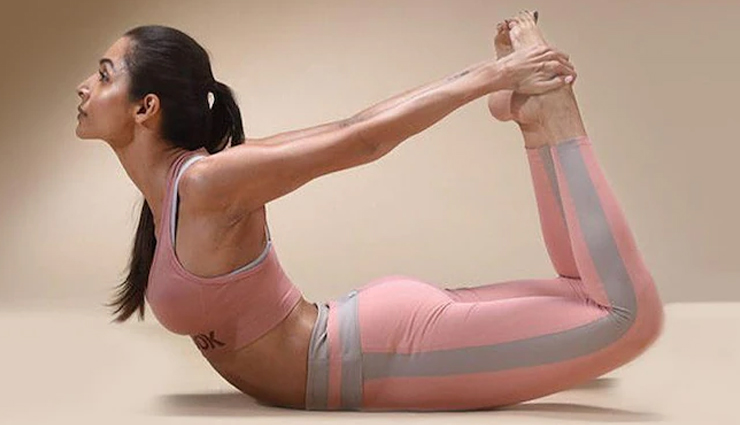
# Dhanurasana (Bow Pose)
Dhanurasana engages the core muscles and stimulates the abdominal organs. It helps in burning fat, strengthening the abdominal muscles, and improving digestion. This pose also stretches the entire front body, promoting flexibility and toning the belly.
Steps to Practice Dhanurasana (Bow Pose):
- Lie down on your belly with your legs extended and your arms alongside your body.
- Bend your knees and bring your heels close to your buttocks, keeping them hip-width apart.
- Reach your hands back and hold your ankles or feet with your palms.
- Inhale deeply and lift your chest off the ground while simultaneously raising your thighs. Keep your gaze forward and maintain a steady breath.
- Press your feet into your hands, lifting your thighs higher and creating a deep curve in your back.
- Hold the pose for 20 to 30 seconds, or as long as you feel comfortable. Focus on breathing deeply and evenly.
- To release the pose, exhale and gently lower your chest and thighs back down to the mat. Release your ankles and relax your body.
Precautions:
- If you have any recent or chronic back or neck injuries, it's best to avoid or modify this pose. Consult with a qualified yoga instructor or healthcare professional for guidance.
- Pregnant women should avoid practicing Dhanurasana, especially during the later stages of pregnancy, as it puts pressure on the abdomen.
- If you have high or low blood pressure, practice this pose with caution and avoid straining.
- Take care not to overextend or push your body beyond its limits. Listen to your body and honor its boundaries.
- If you experience any sharp pain or discomfort in your lower back, release the pose immediately and seek guidance from a yoga instructor.
- It's recommended to practice Dhanurasana on an empty stomach or at least two to three hours after a meal for better comfort and digestion.
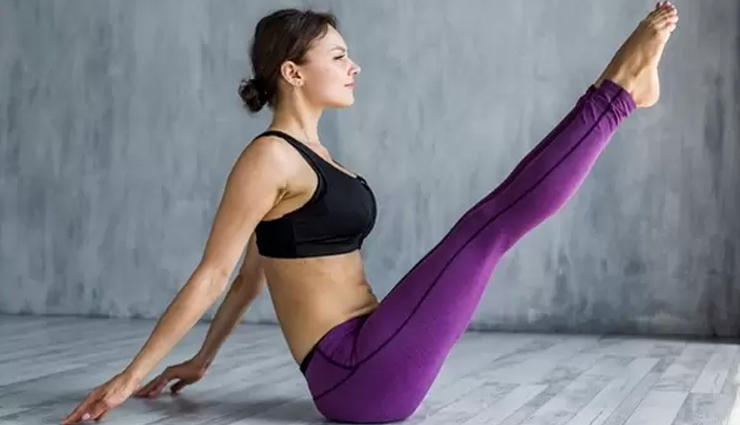
# Naukasana (Boat Pose)
Naukasana is an effective pose for strengthening the core muscles and toning the abdominal area. It engages the abdominal muscles and activates the digestive system, aiding in fat burning. Regular practice of Naukasana helps in reducing belly fat and improving overall body strength.
Steps to Practice Naukasana (Boat Pose):
Begin by sitting on the mat with your legs extended in front of you and your hands resting beside your hips.
Bend your knees and place your feet flat on the mat, keeping them hip-width apart.
Lean back slightly and lift your feet off the mat, balancing on your sitting bones. Keep your spine straight and engage your core muscles.
Extend your arms straight forward, parallel to the floor, with your palms facing down.
Slowly start straightening your legs, aiming to create a V shape with your body. Keep your toes at eye level or higher.
Lengthen your spine and lift your chest, avoiding any rounding or collapsing of the upper body.
Hold the pose for 20 to 30 seconds, or as long as you feel comfortable. Focus on maintaining a steady breath and keeping your core engaged.
To release the pose, exhale and slowly lower your legs and upper body back to the mat. Relax and take a few breaths in a resting position.
Precautions:
Avoid practicing Naukasana if you have recent or chronic back or neck injuries. If you have any concerns, consult with a qualified yoga instructor or healthcare professional.
Pregnant women should avoid practicing Naukasana, especially during the later stages of pregnancy, as it puts pressure on the abdomen.
If you have high or low blood pressure, practice this pose with caution and avoid straining. Modify the pose by keeping your knees bent if needed.
Take care not to strain your neck or shoulders. Keep the shoulders relaxed and away from the ears.
If you experience any discomfort or pain in the lower back, modify the pose by keeping your knees bent or reduce the intensity by lowering the legs slightly.
It's recommended to practice Naukasana on an empty stomach or at least two to three hours after a meal for better comfort and digestion.
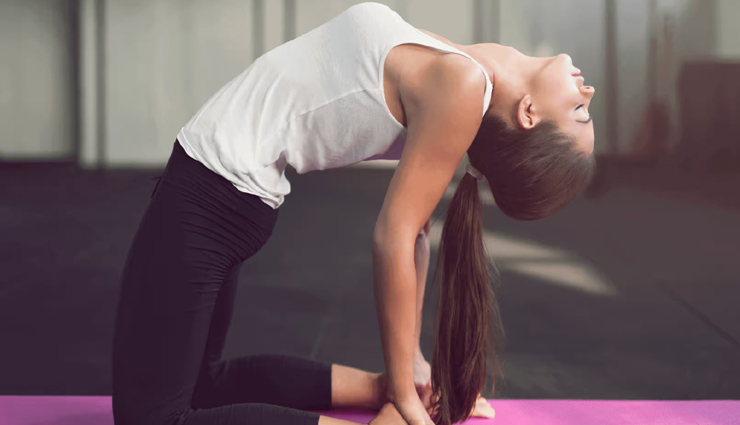
# Ustrasana (Camel Pose)
Ustrasana is a deep backbend that stretches the entire front body, including the abdominal area. It stimulates the digestive organs and improves metabolism, which can contribute to reducing belly fat. This pose also improves posture and energizes the body.
Steps to Practice Ustrasana (Camel Pose):
- Begin by kneeling on the mat with your knees hip-width apart. Place your hands on your hips, fingers pointing down towards the floor.
- Engage your core muscles and lengthen your spine by drawing your tailbone down towards the floor.
- Inhale deeply and lift your sternum towards the ceiling, gently arching your back.
- As you exhale, slowly reach back with your right hand and grasp your right heel or ankle. If this is challenging, you can place your right hand on your lower back for support.
- Inhale again and extend your left arm overhead, reaching towards the ceiling.
- Hold the pose for a few breaths, maintaining a steady and even breath.
- To release, exhale and slowly bring your left hand down to your side, followed by your right hand. Return to an upright kneeling position.
Precautions:
- Avoid practicing Ustrasana if you have any recent or chronic neck, back, or knee injuries. If you have any pre-existing medical conditions, consult with a qualified yoga instructor or healthcare professional before attempting this pose.
- If you feel any pain or discomfort in the lower back or neck during the pose, come out of it slowly and modify the depth of the backbend to a more comfortable level.
- It's important to warm up your body before attempting Ustrasana. Engage in some gentle stretching and warm-up exercises to prepare your muscles and joints.
- Always listen to your body and respect its limits. Do not push yourself beyond your comfort zone, especially if you are a beginner. Gradually work your way into the full expression of the pose over time.
- Modify the pose as needed by placing your hands on your lower back or using blocks or props for support.
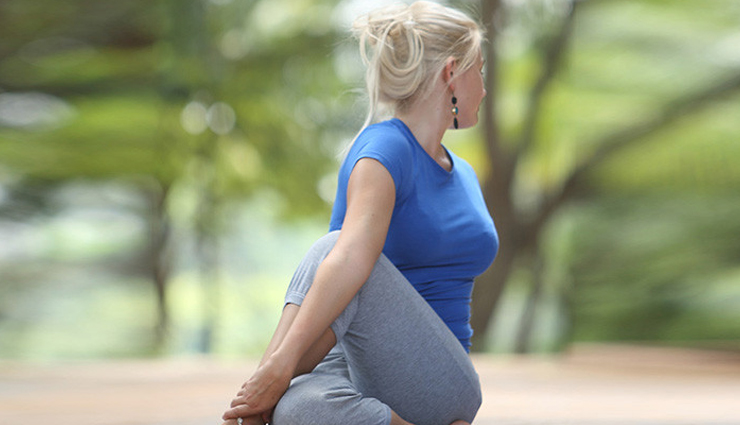
# Ardha Matsyendrasana (Half Spinal Twist Pose)
Ardha Matsyendrasana massages the abdominal organs, improves digestion, and stimulates the metabolic rate. It stretches the spine and helps in toning the abdominal muscles. Regular practice of this twisting pose can aid in reducing belly fat and improving digestion.
Steps to Practice Ardha Matsyendrasana (Half Spinal Twist Pose):
- Begin by sitting on the mat with your legs extended in front of you.
- Bend your knees and place your feet on the mat, bringing them close to your buttocks.
- Slide your left foot under your right leg, placing it outside of your right hip.
- Cross your right leg over your left, planting the foot flat on the mat beside your left knee.
- Inhale and lengthen your spine, sitting tall.
- Exhale and twist your torso to the right, placing your left hand on your right knee or thigh for support.
- Place your right hand behind you, fingertips resting on the mat for balance.
- Gently twist further to the right, using your breath to deepen the twist. Keep your spine straight and shoulders relaxed.
- Hold the pose for 30 to 60 seconds, or as long as you feel comfortable. Breathe deeply and evenly throughout the pose.
- To release the pose, inhale and slowly unwind your torso, returning to the center. Extend your legs and repeat on the other side.
Precautions:
- If you have a recent or chronic back or spine injury, practice Ardha Matsyendrasana under the guidance of a qualified yoga instructor or healthcare professional.
- Avoid or modify the pose if you have a herniated disc, sciatica, or any other spinal condition. Consult with a healthcare professional before attempting this pose.
- Take care not to strain your neck or force the twist. The twist should come from the rotation of the torso, not from pulling or pushing with the arms.
- If you experience any pain or discomfort during the pose, release it immediately and seek guidance from a yoga instructor or healthcare professional.
- Practice the pose with awareness and respect for your body's limits. Do not force the twist beyond your comfort level.
- It is advisable to practice Ardha Matsyendrasana on an empty stomach or at least two to three hours after a meal for better digestion.
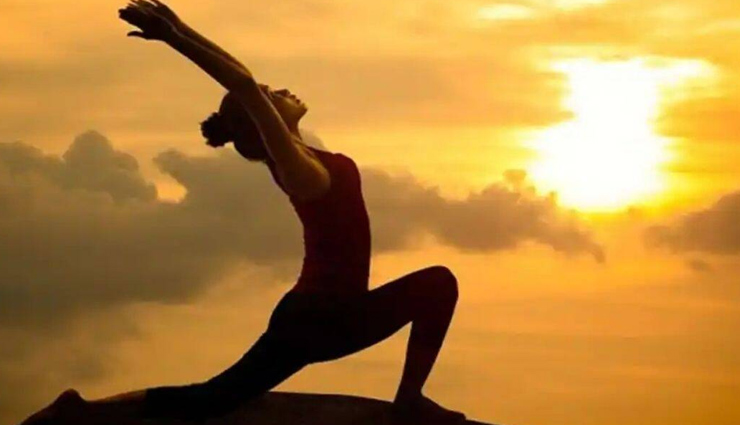
# Surya Namaskar (Sun Salutation)
Surya Namaskar is a series of twelve yoga poses performed in a flowing sequence. It combines various forward and backward bends, as well as stretching and strengthening poses. Regular practice of Surya Namaskar improves blood circulation, stimulates digestion, and helps in reducing overall body fat, including belly fat.
Steps to Practice Surya Namaskar (Sun Salutation):
- Begin at the top of your mat with your feet together and palms pressed together in front of your heart (Pranamasana).
- Inhale deeply, then as you exhale, bring your arms down alongside your body and fold forward into a forward bend (Uttanasana).
- Inhale and lift your chest forward into a halfway lift, lengthening your spine (Ardha Uttanasana).
- Exhale and step or jump your feet back into a high plank position, aligning your wrists under your shoulders and engaging your core.
- Lower your knees to the mat, then lower your chest and chin to the ground, keeping your elbows close to your body (Ashtanga Namaskara).
- Inhale and slide forward into Cobra Pose, lifting your chest off the mat while keeping your pelvis grounded.
- Exhale and lift your hips up and back into Downward-Facing Dog Pose (Adho Mukha Svanasana). Press your hands into the mat and lengthen your spine.
- Inhale and step or jump your feet forward between your hands, coming into a halfway lift (Ardha Uttanasana).
- Exhale and fold forward into a forward bend (Uttanasana).
- Inhale, engage your core, and rise up with a flat back, reaching your arms up overhead (Urdhva Hastasana).
- Exhale and bring your palms together in front of your heart, returning to the starting position (Pranamasana).
Precautions:
- If you have any recent or chronic injuries or medical conditions, it's advisable to practice Surya Namaskar under the guidance of a qualified yoga instructor or healthcare professional.
- Listen to your body and modify the poses as needed. If you have limitations in your wrists, shoulders, or lower back, adapt the poses to avoid strain or discomfort.
- Avoid practicing Surya Namaskar during pregnancy unless you have prior experience and the guidance of a prenatal yoga instructor. Modify the poses to suit your changing body.
If you have high or low blood pressure, practice the poses with caution. Modify or skip the plank pose and avoid holding your breath.
Take care not to strain your neck or shoulders. Keep the neck relaxed and the shoulders away from the ears throughout the sequence.
Practice Surya Namaskar at your own pace and within your comfort level. Do not rush through the poses, and allow your breath to guide your movements.





